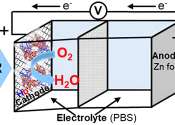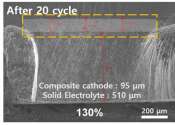Lithium-ion batteries (sometimes abbreviated Li-ion batteries) are a type of rechargeable battery in which lithium ions move from the anode to cathode during discharge, and from the cathode to the anode when charged.
Lithium ion batteries are common in consumer electronics. They are one of the most popular types of battery for portable electronics, with one of the best energy-to-weight ratios, no memory effect, and a slow loss of charge when not in use. In addition to uses for consumer electronics, lithium-ion batteries are growing in popularity for defense, automotive, and aerospace applications due to their high energy density. However, certain kinds of mistreatment may cause conventional Li-ion batteries to explode.
The three primary functional components of a lithium ion battery are the anode, cathode, and electrolyte, for which a variety of materials may be used. Commercially, the most popular material for the anode is graphite. The cathode is generally one of three materials: a layered oxide, such as lithium cobalt oxide, one based on a polyanion, such as lithium iron phosphate, or a spinel, such as lithium manganese oxide, although materials such as TiS2 (titanium disulfide) were originally used. Depending on the choice of material for the anode, cathode, and electrolyte the voltage, capacity, life, and safety of a lithium ion battery can change dramatically. Recently novel architectures have been employed to improve the performance of these batteries. Lithium ion batteries are not to be confused with lithium batteries, the key difference being that lithium batteries are primary batteries containing metallic lithium while lithium-ion batteries are secondary batteries containing an intercalation anode material.









